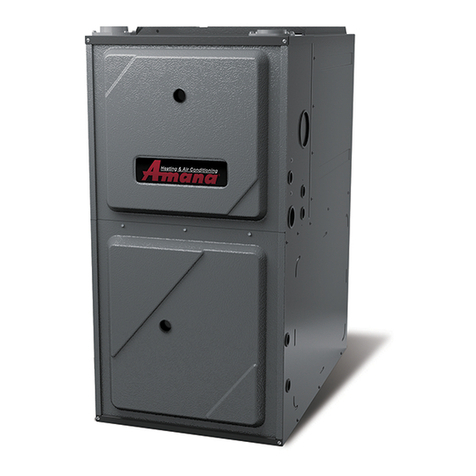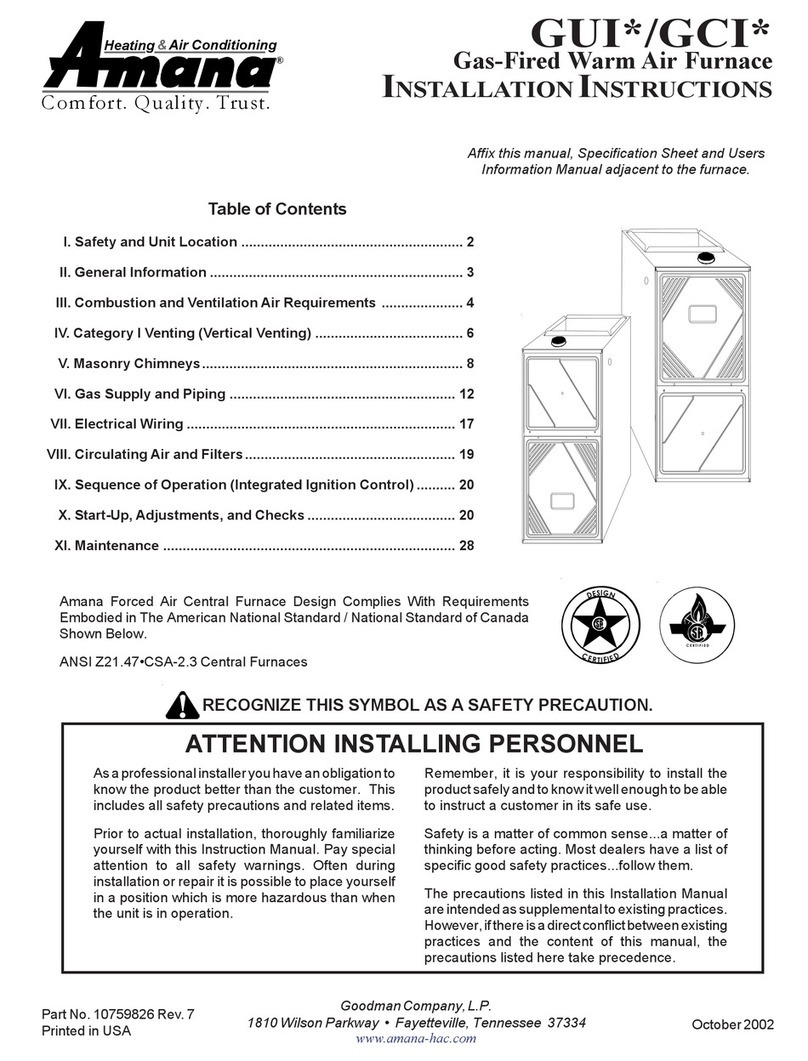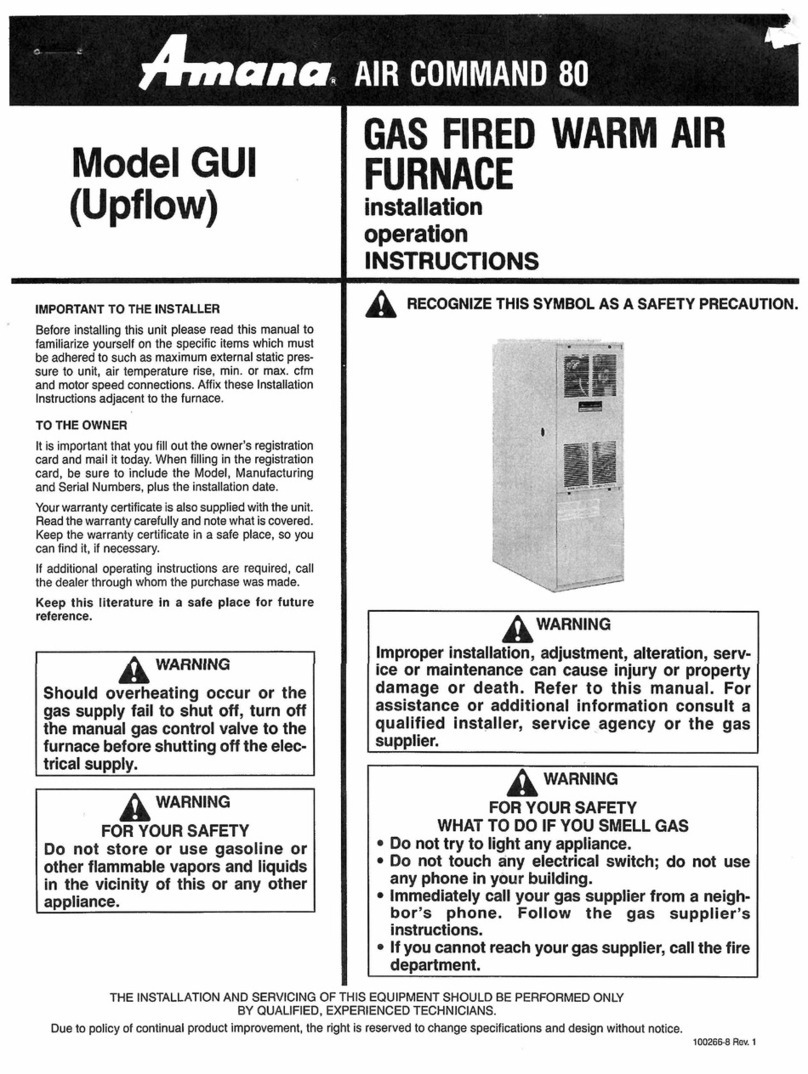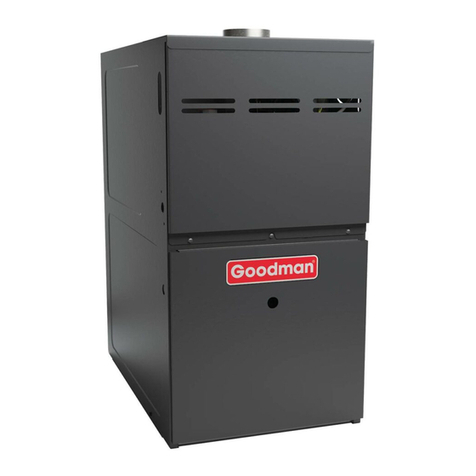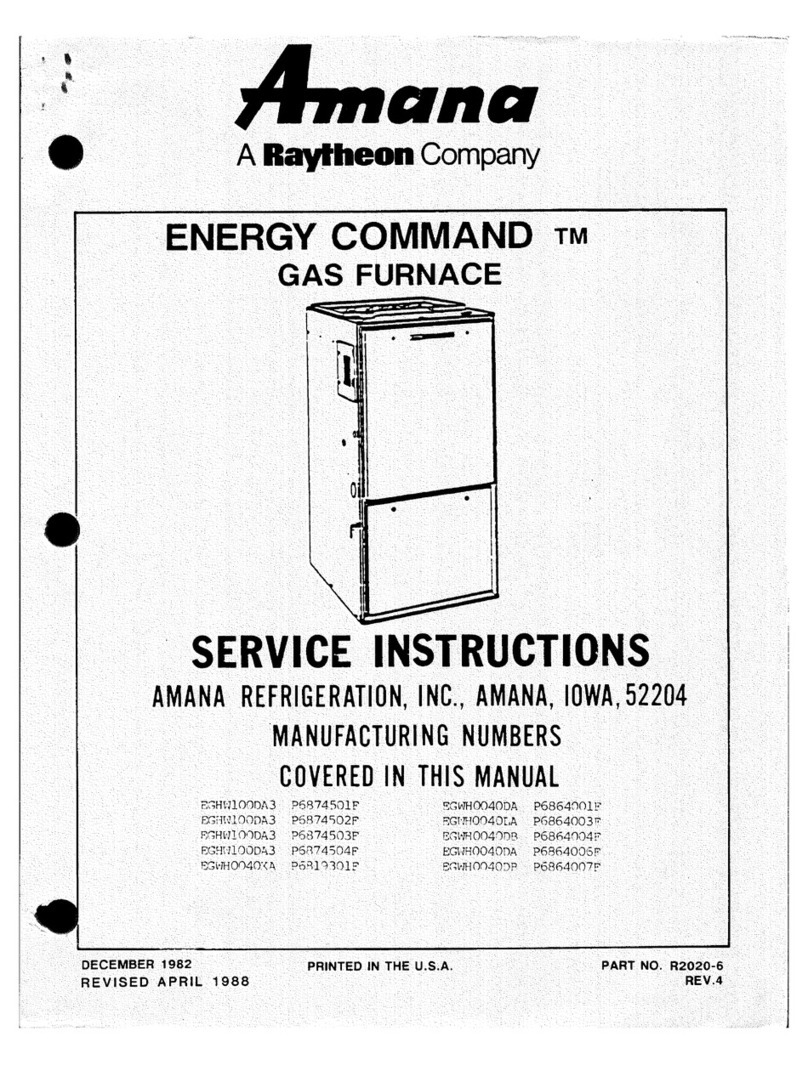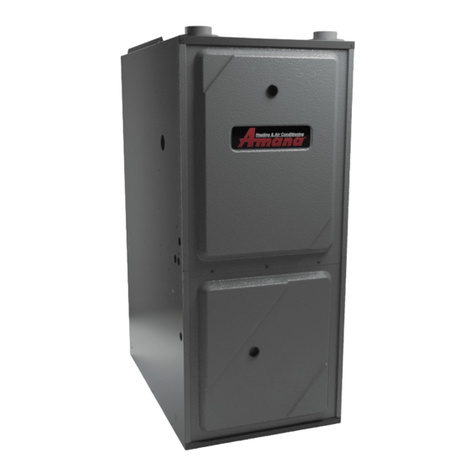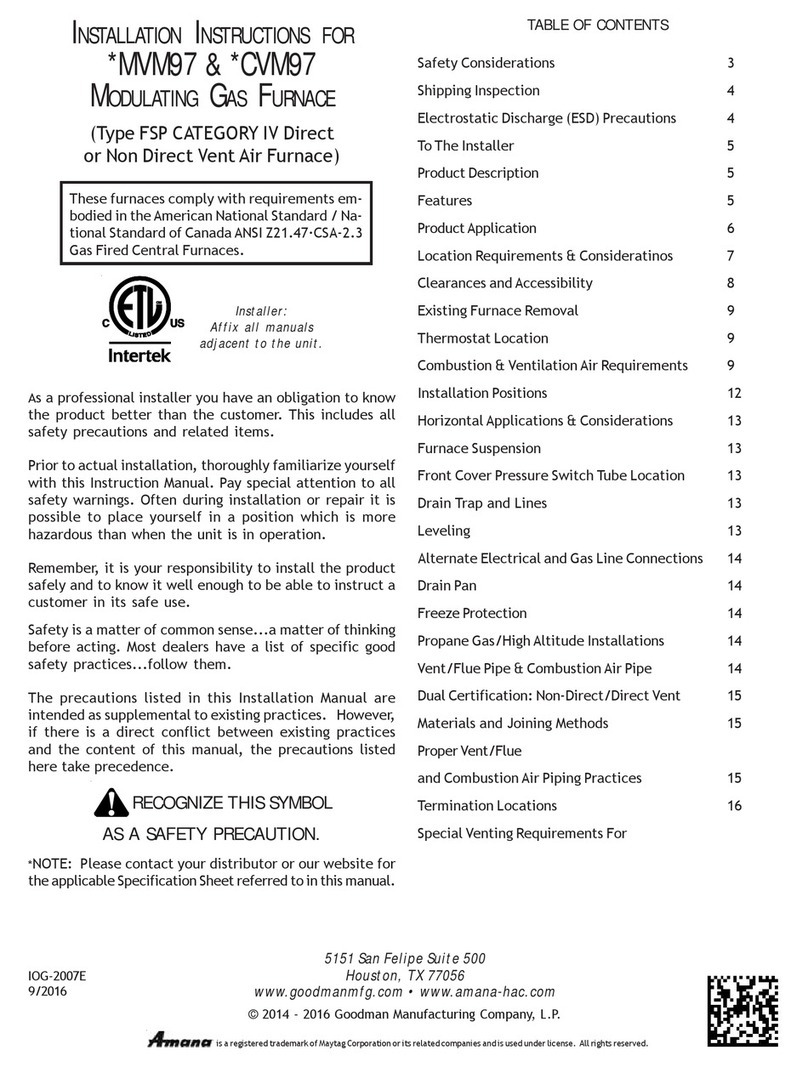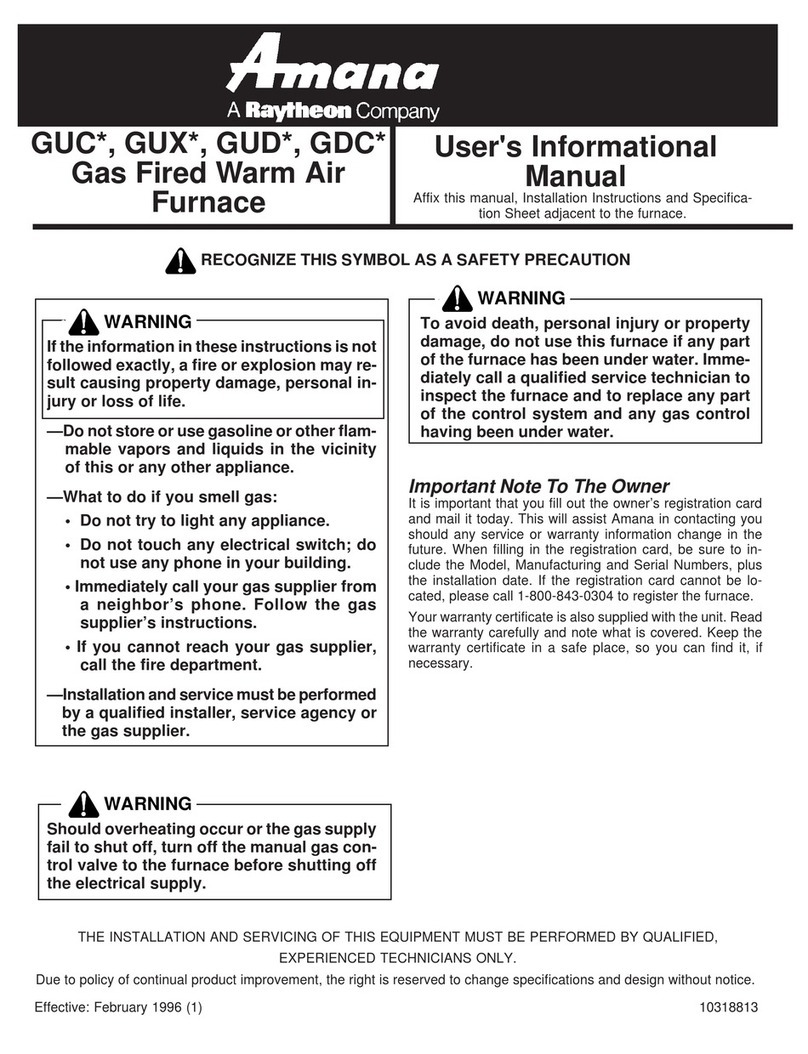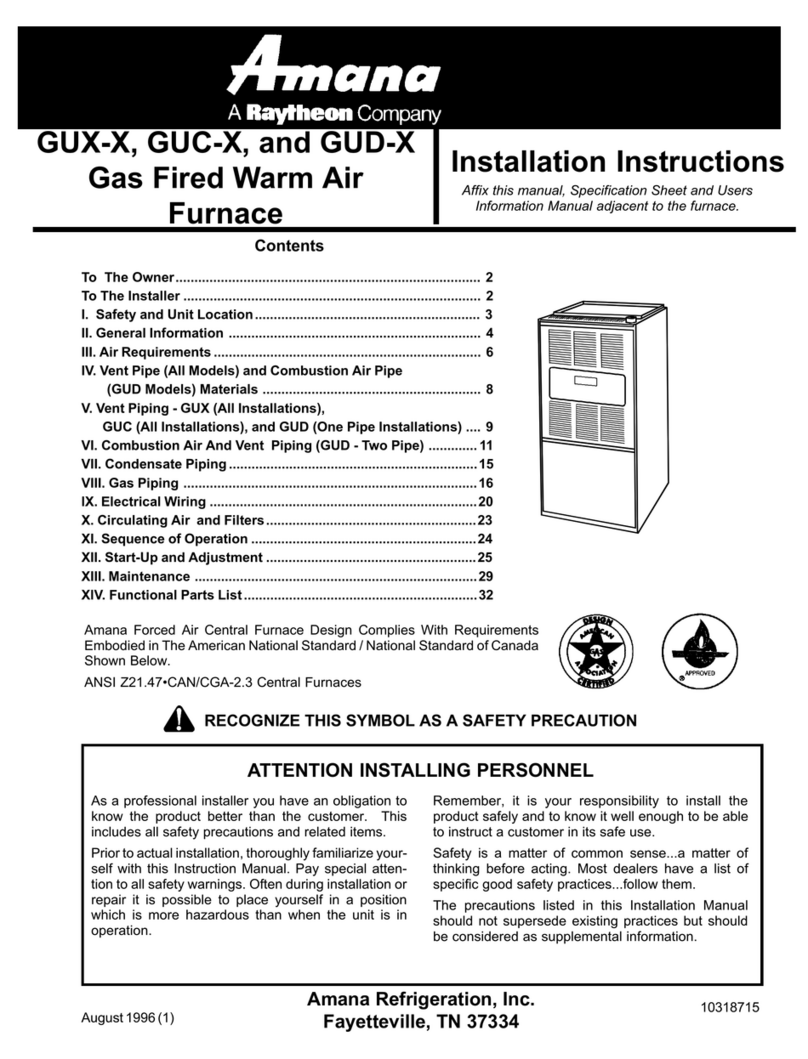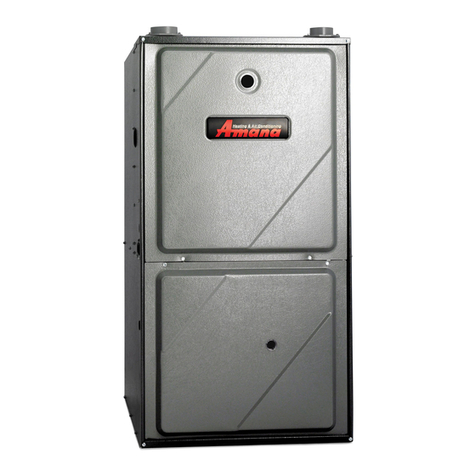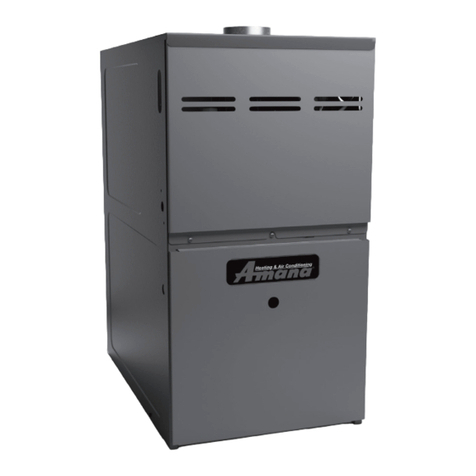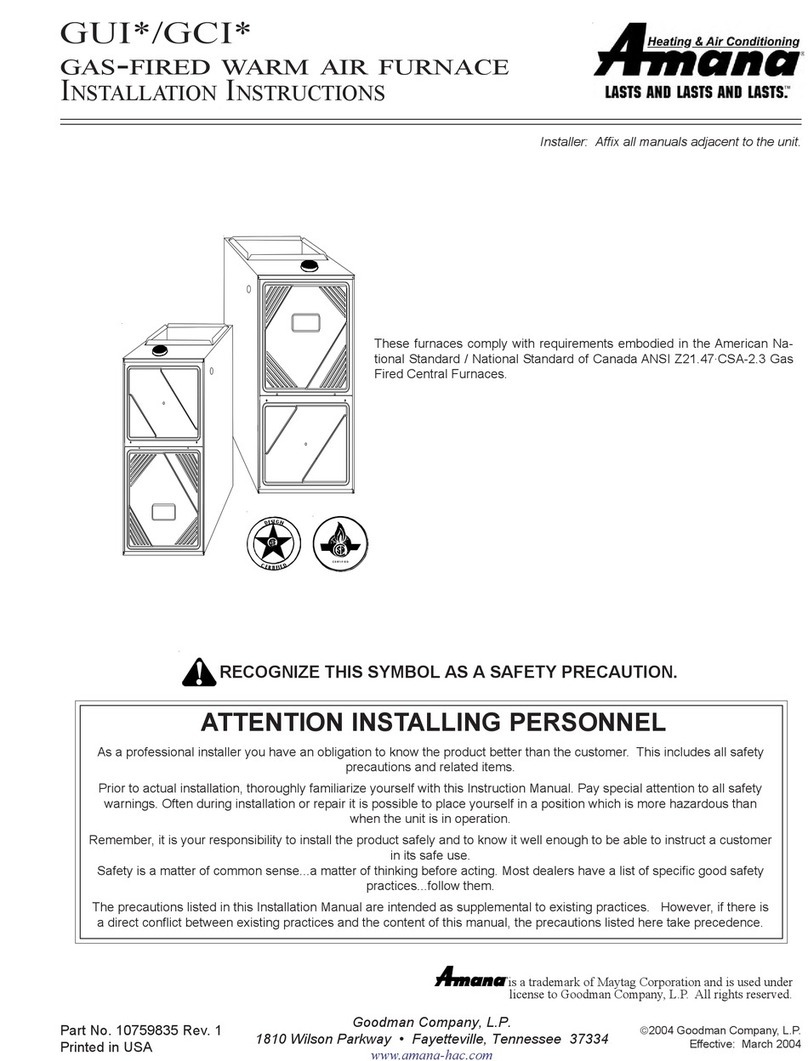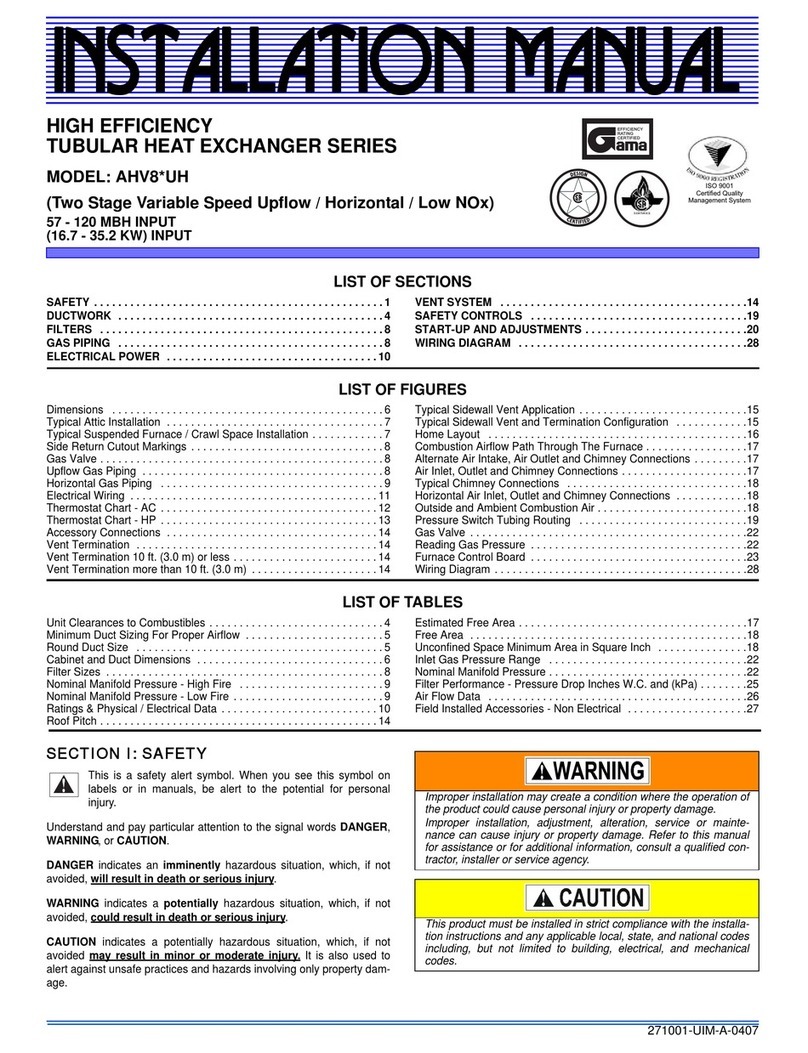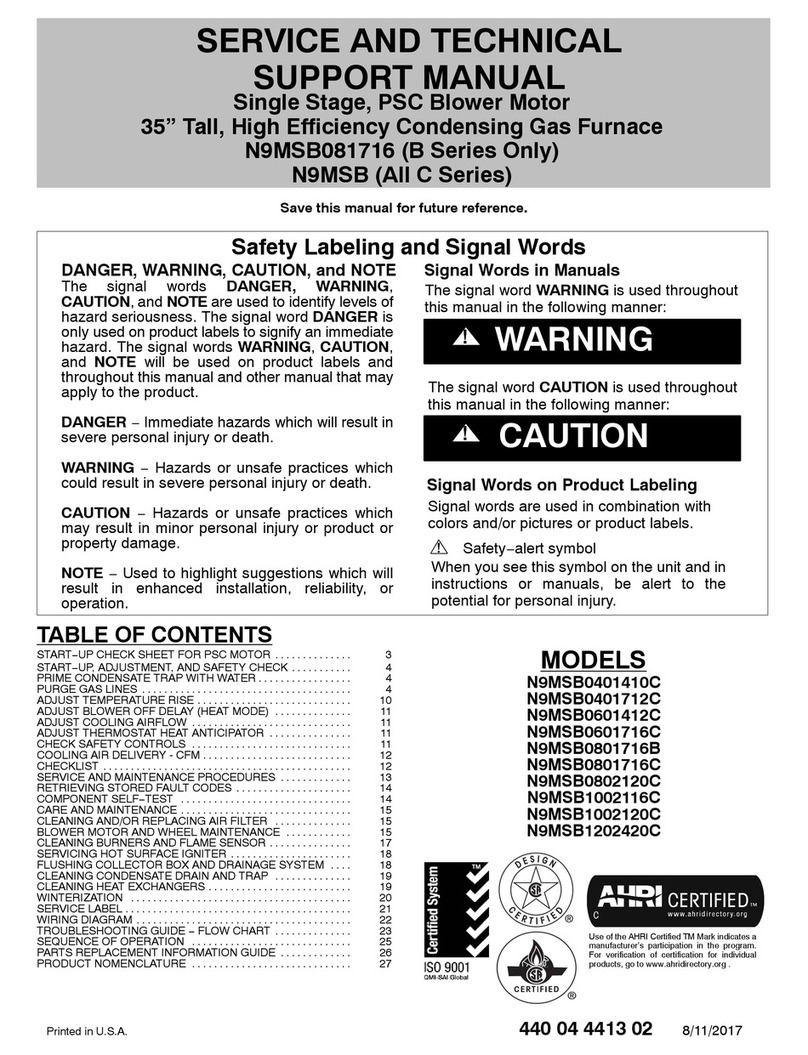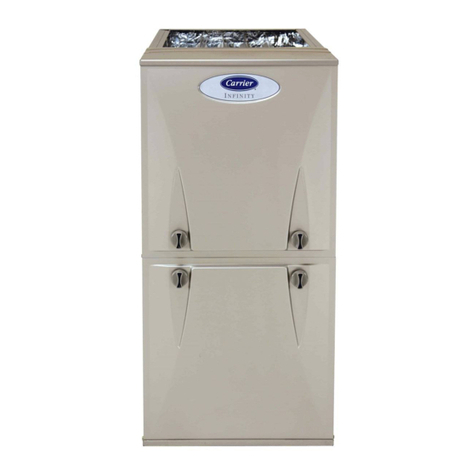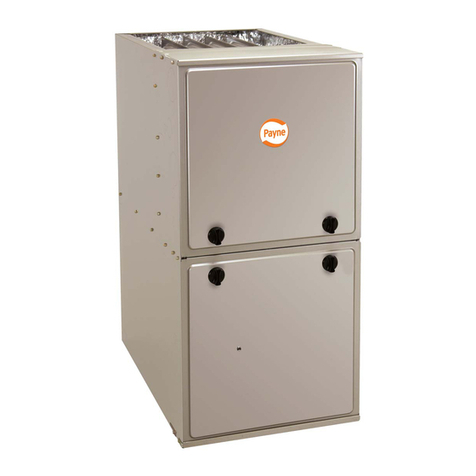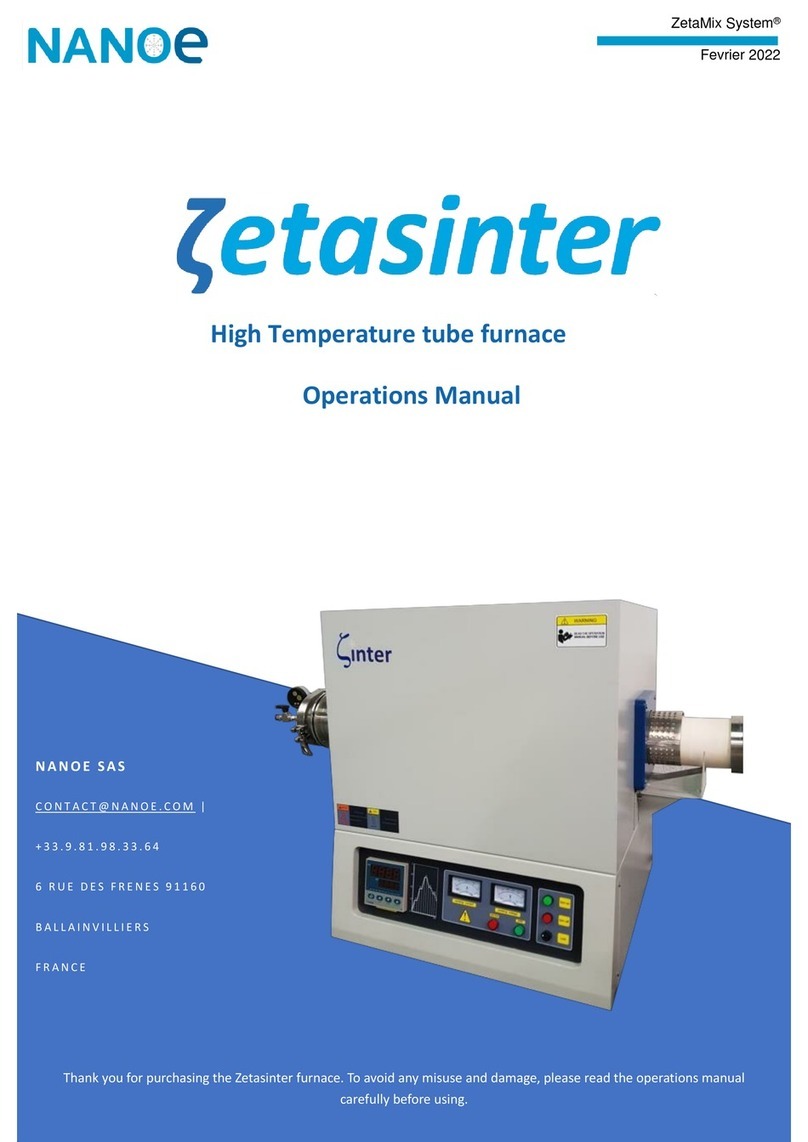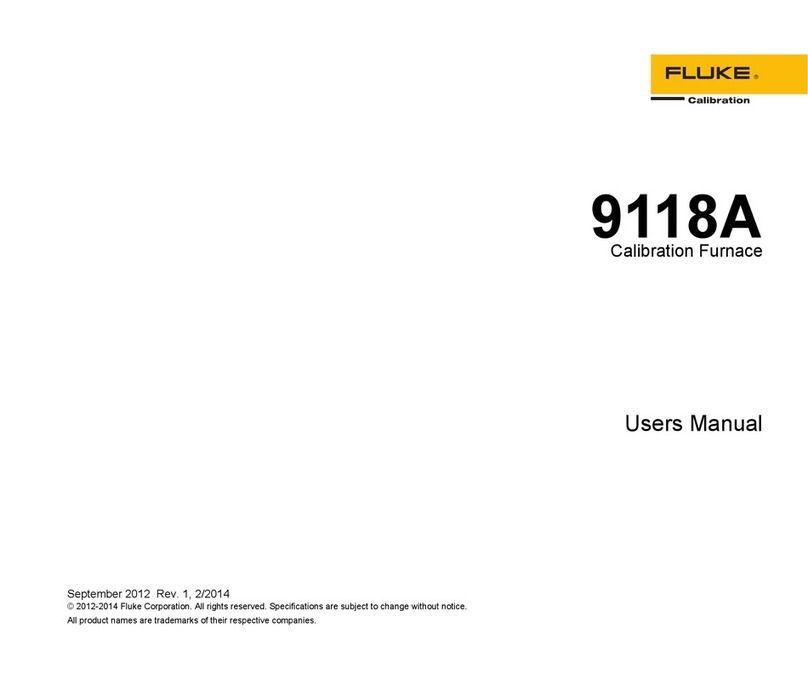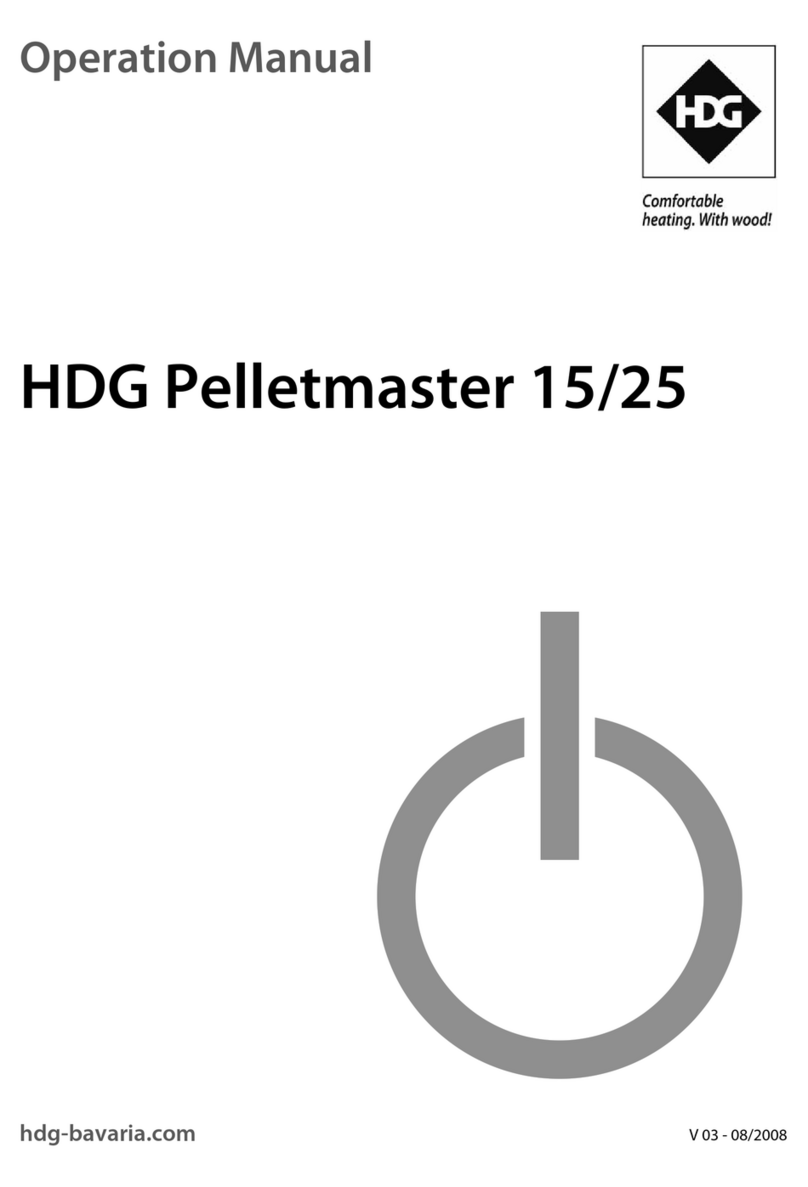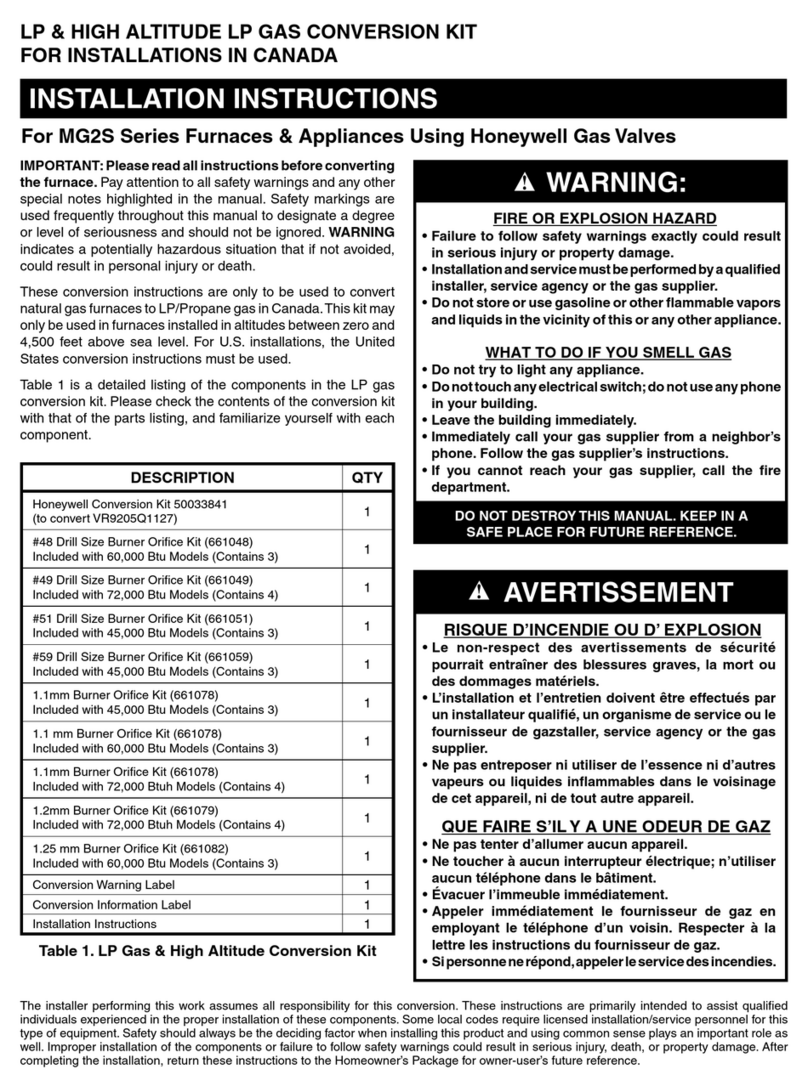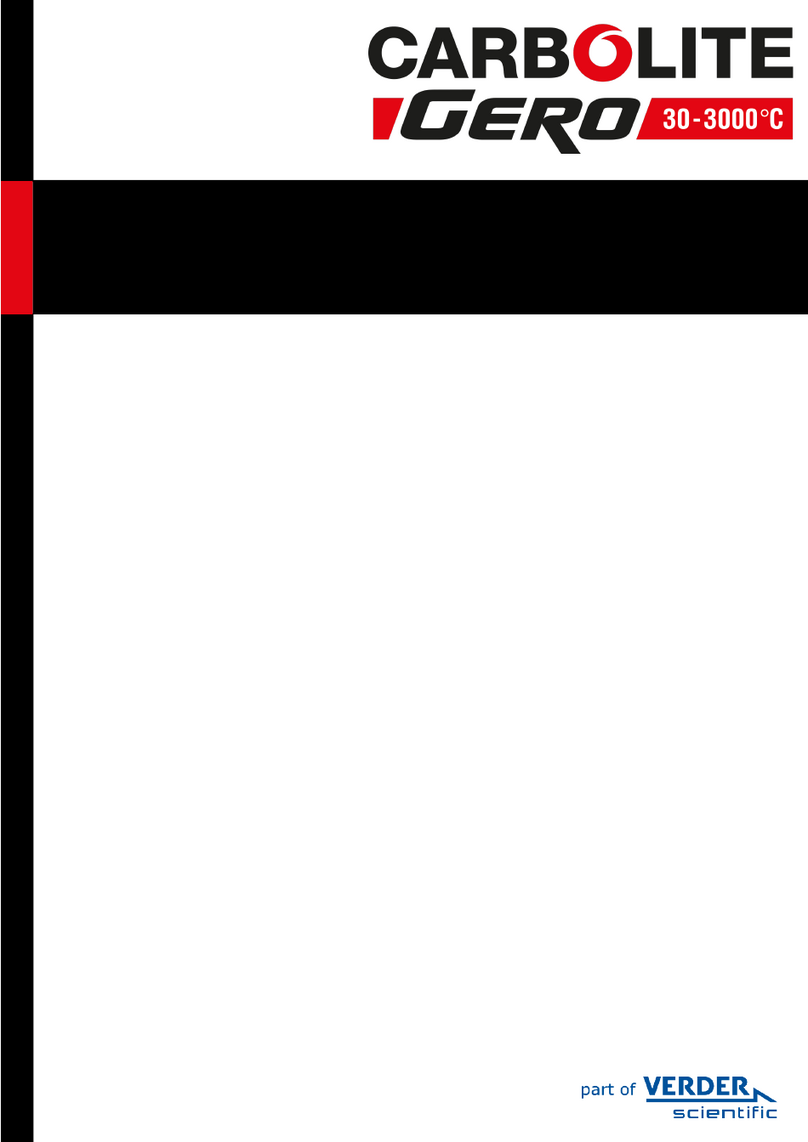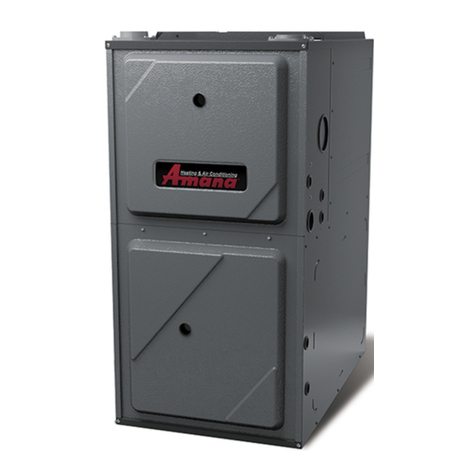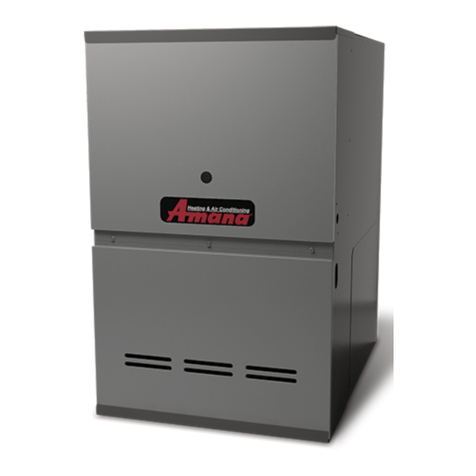
9
Operating Your Furnace
Furnace Operation
In the heating mode, gas is burned and the products of
combustion are drawn through a heat exchanger by an
induced draft blower. The flue gases are then exhausted
from your home through a flue pipe system. The furnace
circulator blower passes indoor air over the heat ex-
changer and then through the conditioned space. The
furnace heat exchanger is actually two exchangers, a
primary and a secondary, connected in series. The
primary heat exchanger is a tubular stainless steel
design built for exceptional durability and efficient heat
transfer. The secondary heat exchanger, sometimes
referred to as a recuperator coil, is a stainless steel tube
and aluminum fin arrangement designed to remove the
last remaining heat from the flue gases. The amount of
heat withdrawn from the flue gases is so great that the
gases are actually cooled to the point of condensing.
This furnace therefore produces condensate (water)
which must be directed to a drain. Furnaces of this type
are referred to as “condensing furnaces”.
Thermostat Functions
For optimum use of your two-stage furnace, a two-stage
thermostat is required. (NOTE: A single-stage thermo-
stat can be used with this furnace; however, true two-
stage operation will not be achieved.) A two-stage
thermostat will control the furnace firing rate (low stage
or high stage) depending on the difference between the
thermostat set point and the current room temperature.
A small temperature difference between the set point
and current room temperature will require a low stage
firing rate, while a large difference between the two will
require a high stage. BE SURE TO BECOME FAMILIAR
WITH YOUR THERMOSTAT. Proper use of the two-
stage thermostat and furnace will maintain tighter
temperature control than a conventional single-stage
system.
For optimal furnace operation, set the thermostat to the
desired temperature. Do not “over adjust” the thermostat
to turn the heat on. Over adjusting will cause high stage
operation when low stage operation would have been
sufficient. An appropriately set thermostat will minimize
temperature fluctuations.
The most widely used types of two stage thermostats
will control both heating and cooling functions and will
have a Fan Switch with AUTO and ON settings. On
AUTO, the circulating air blower will cycle on/off with the
furnace but if switched to ON it will run continuously
regardless of whether or not heating or cooling is being
provided.
Fan Switch
Cool/Heat
Switch
Cool/Heat
Temperature
Control Dials
Room Temperature
Thermostat
There are also thermostats which automatically switch
from heating to cooling mode and those with night set-
back capability. The night set-back, or multiple set-
back types allow for a different temperature at night or
during the day when no one is at home. Programmable
thermostats will allow for more control and tailoring of
the heating and cooling functions. The level of this
control will depend on the type of thermostat applied.
WARNING
Electrical components are contained in both
compartments. To avoid electrical shock, injury or
death, do not remove any internal compartment
covers. Contact a qualified servicer at once if an
abnormal condition is noticed.
Notice:
Do not use this furnace if any part has been under
water. Immediately call a qualified servicer to inspect
the furnace and to replace any part of the control
system and any gas control which has been under
water.
Keep both doors in place except for inspection and
maintenance. An interlock switch prevents furnace
operation if the blower door is not in place.
Integrated Control Module
This furnace is equipped with an integrated control
module which regulates all furnace operations. The
control responds to input from the thermostat, initiates
and controls normal furnace operation, and monitors
and responds to all safety circuits.
Gas Valve
The gas valve regulates gas flow to the burners in
response to input from the integrated control module.
Igniter
The furnace has an electronic ignition device which
lights the burners automatically, never try to light the
burners by hand.
System
Switch
Fan
Switch Action
OFF AUTO None
COOL AUTO System only cools, fan
cycles off and on.
COOL ON System only cools, fan
runs all the time.
HEAT AUTO System only heats, fan
cycles off and on.
HEAT ON System only heats, fan
runs all the time.
OFF ON No heatin
or coolin
,
fanrunsallthetime.
Typical Thermostat
